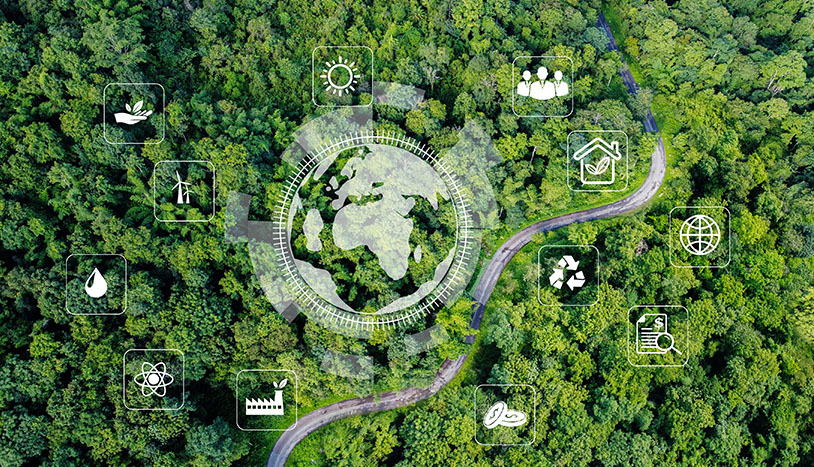
By Jenn Taranto, Vice President, Sustainability, STO Building Group
In construction and sustainability, innovation is often equated with technology. We hear it every day: “Just implement this app, this dashboard, this software platform, and your problems will disappear.” But let’s be honest. For many teams, the tools keep piling up while the real-world friction stays exactly the same.
That’s because innovation isn’t just digital. It is also cultural. It’s about how we think, how we communicate, and how we do the work. The truth is that process change, especially the messy, analog, human-centered kind, is often harder than installing new software, but ultimately more impactful.
If we want innovation to stick, we have to stop chasing shiny objects and start asking better questions. Here are eight reminders for anyone trying to drive sustainable change in this space.
1. We’re overburdened by software solutions.
There’s an app for everything. And another app to manage the first app. Before long, teams are juggling half a dozen platforms just to coordinate waste tracking, embodied carbon, LEED documentation, and GHG emissions. The problem isn’t that these tools are bad. Many are useful. But layering them on without real integration or strategy doesn’t help. It creates noise instead of clarity.
Innovation should remove friction, not add more of it. If your team is spending more time logging into platforms than solving problems, you may need fewer tools and more thoughtful process design.

2. Don’t outsource thinking.
Technology can support good decisions, but it doesn’t replace judgment. No carbon calculator knows your site constraints. No green building management tool understands your client’s risk tolerance. No AI engine can read the room on a tense project call.
Innovation starts with paying attention. If something seems off, question it. If a process feels broken, say something. If the tool doesn’t make sense, don’t blindly follow the prompt. Use your experience, your instincts, and your professional judgment.
We need more critical thinkers, not just tool operators.

3. Look for allies.
Driving change is hard. Doing it alone is nearly impossible.
The best process innovations happen when you find the other person who also sees the bottleneck, the duplicate effort, or the unnecessary waste. Maybe it’s a super who knows how to simplify a workflow. Maybe it’s a PM who’s tired of throwing away so many doors. Maybe it’s someone in procurement who’s already asking smarter questions about materials.
Start there. Change gets traction when people feel supported, not lectured.
4. Keep it simple.
We love frameworks. We love certifications. We love a ten-step improvement plan with color-coded metrics. But at the end of the day, if your solution is too complex to explain to someone in a five-minute huddle, it’s not going to work on a jobsite.
Simplicity is powerful. It’s also surprisingly difficult to achieve. When designing a new process or rolling out a tool, ask yourself:
- Can anyone understand it?
- Can it survive staff turnover?
- Can it be applied in a high-pressure situation?
- Will it still work when things go wrong?
Complexity looks impressive on slides. Simplicity gets results in the field.
5. Understand your sphere of influence.
You don’t need to be the CEO to innovate. You just need to understand what you can control and start there.
Maybe you can’t overhaul your company’s entire waste management strategy, but you can make sure your job has clearly labeled bins and a clean dock. Maybe you can’t mandate a new procurement policy, but you can ask suppliers to suggest lower-carbon alternatives. Maybe you can’t get your client to embrace circularity, but you can salvage materials that are already on-site.
Small shifts, repeated over time, lead to systemic change. Don’t underestimate the power of your corner of the world.
6. See the waste.
In Lean, waste isn’t just about trash. It’s about anything that doesn’t add value: excess motion, overprocessing, waiting, rework, or confusion. Once you start seeing waste through that lens, you realize how much of our day is spent managing it.
Why are we entering the same data in three different systems? Why are we waiting two weeks for a decision that could be made in 20 minutes with the right people in the room? Why are we holding onto outdated specs when better options exist?
Waste hides in habits. Innovation begins when you start spotting those moments and asking how they could be better.

7. Be a skeptic.
Not all change is good. Not every solution solves the right problem.
It’s okay to question the new thing. In fact, you should. Ask what problem it’s really trying to solve. Ask who benefits. Ask whether it will still work when projects are behind schedule or teams are short-staffed. Ask how it connects to the larger goals of your team, your client, or your company.
Skepticism doesn’t mean resistance. It means discernment. It means protecting your team’s time, energy, and focus. Because chasing every innovation fad isn’t leadership. It’s distraction.

8. Learn to be comfortable with failure.
Trying something new means it might not work. That’s not a reason to avoid it. It’s a reason to learn faster.
Process innovation is rarely perfect the first time. Sometimes the new tracking method is clunky. Sometimes the pilot program doesn’t scale. Sometimes your idea falls flat. But failure is part of progress, especially in sustainability, where many of us are solving problems that don’t have easy templates or clear endpoints.
What matters is learning, adjusting, and trying again. Innovation isn’t about perfection. It’s about persistence.
So, what does innovation in sustainability really mean?
It means doing things better than we did yesterday in ways that matter. Sometimes that means embracing a new tool. Sometimes it means saying no to the tool. Sometimes it means having a hard conversation, asking a dumb question, or redesigning a process that no longer serves the people doing the work.
Innovation is not a product you buy. It’s a habit you build. If we want our industry to keep evolving to be more sustainable, more efficient, and more human, we have to start by trusting our brains, backing each other up, and remembering that the best solutions are often the simplest ones.
About Jennifer Taranto
Jennifer Taranto is the Vice President of Sustainability at STO Building Group and a leading voice in sustainable construction practices. She is dedicated to helping clients and professionals alike achieve their sustainability goals.
